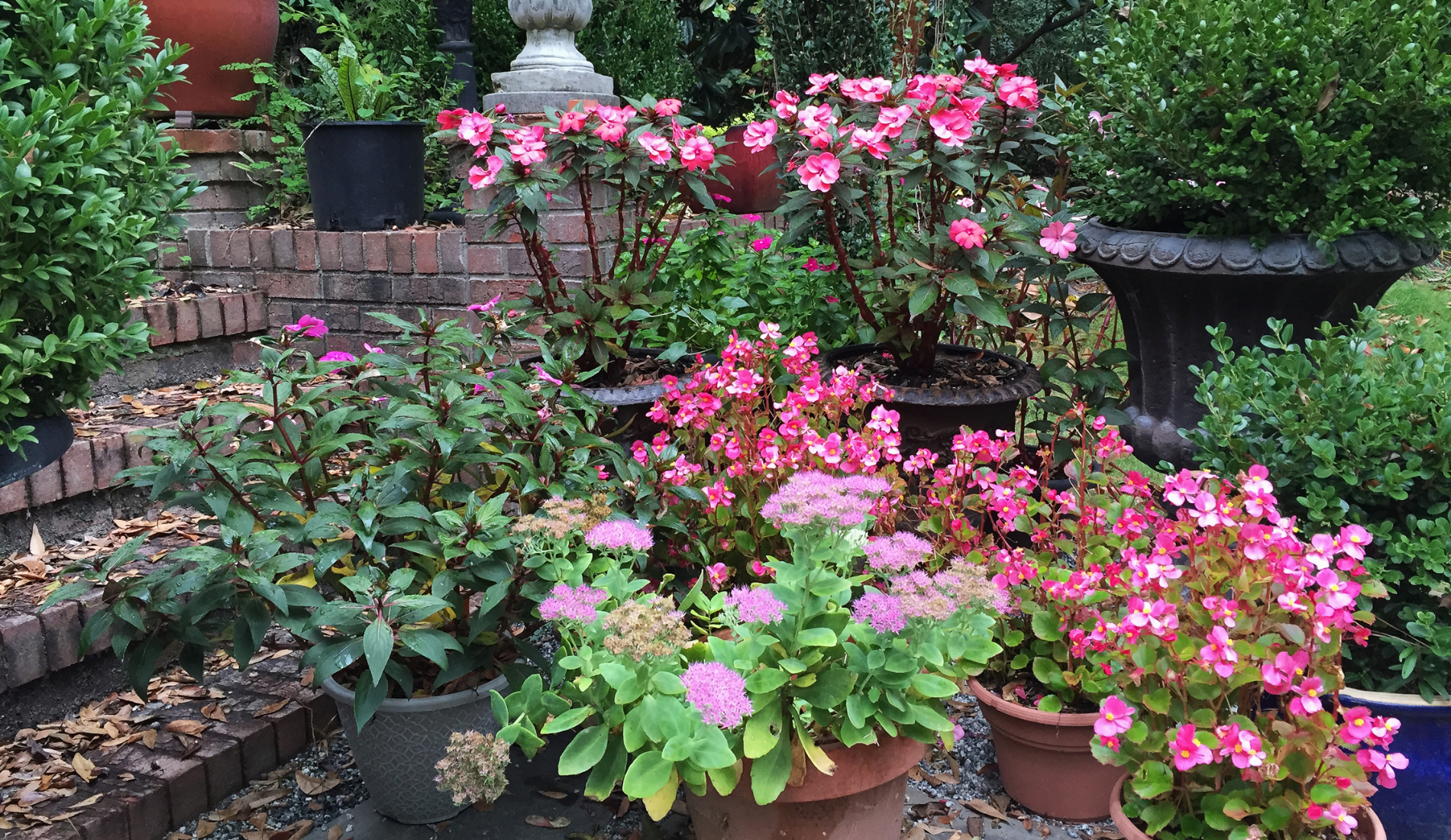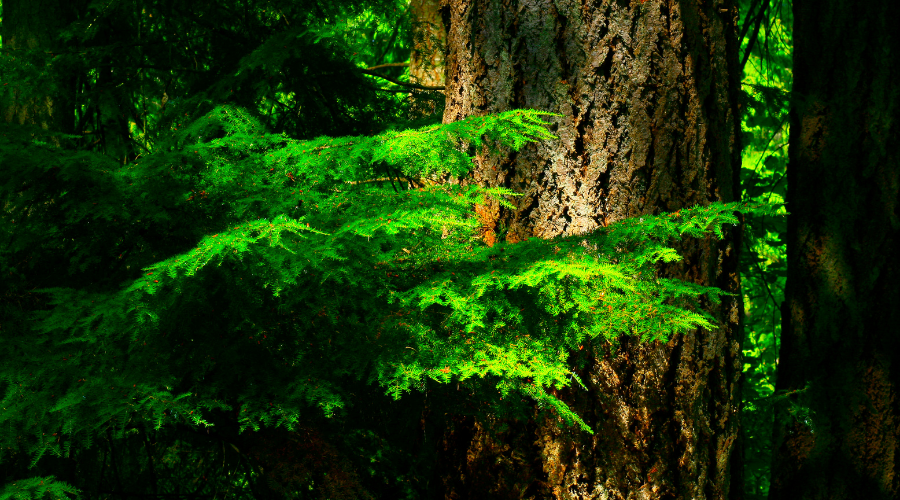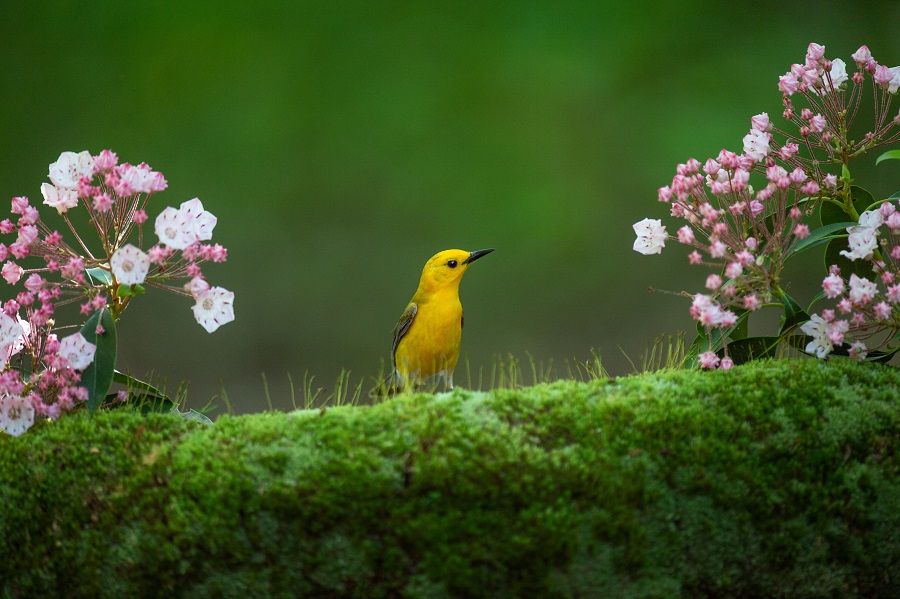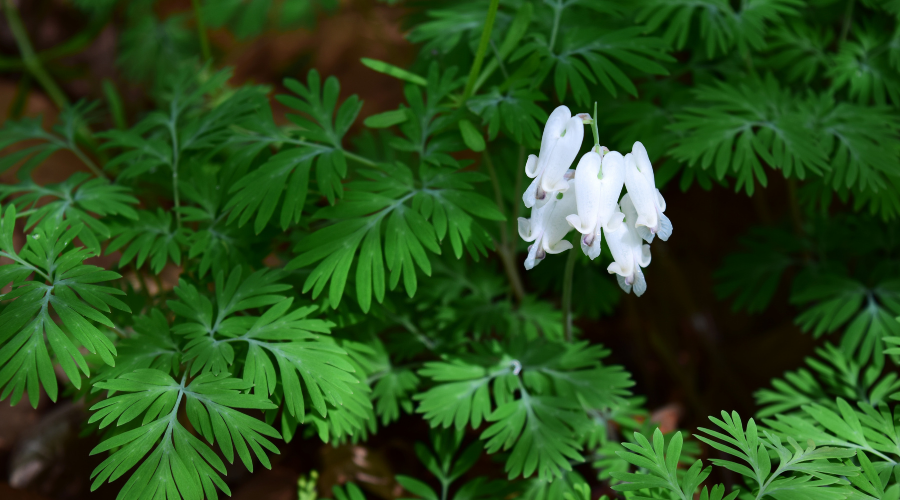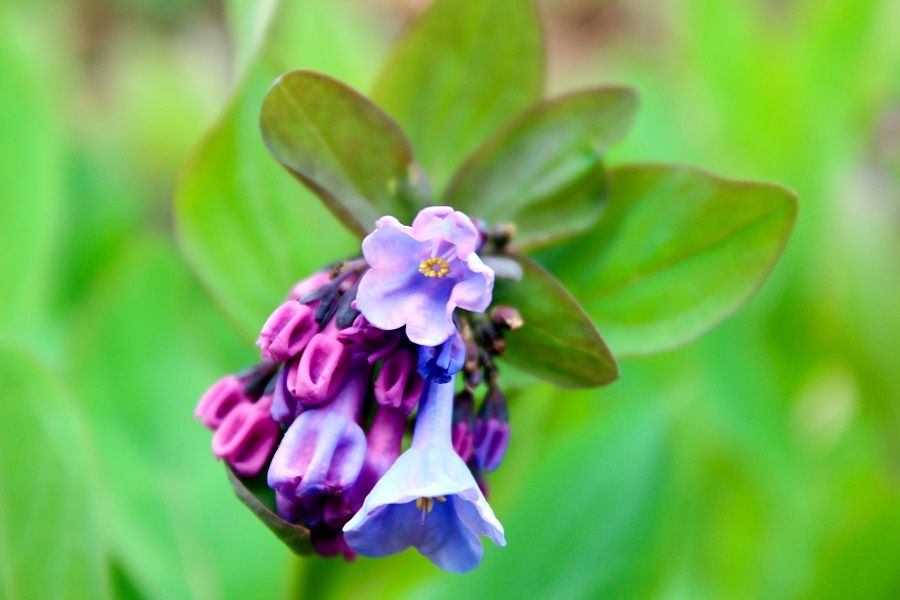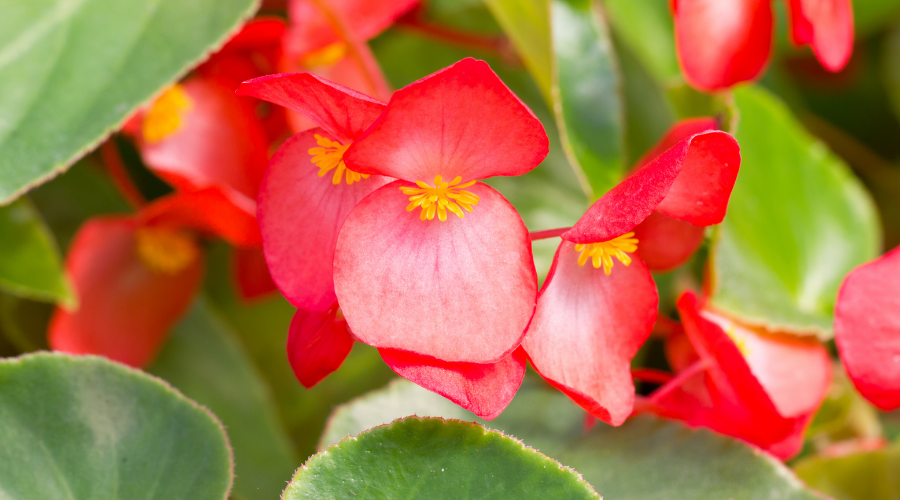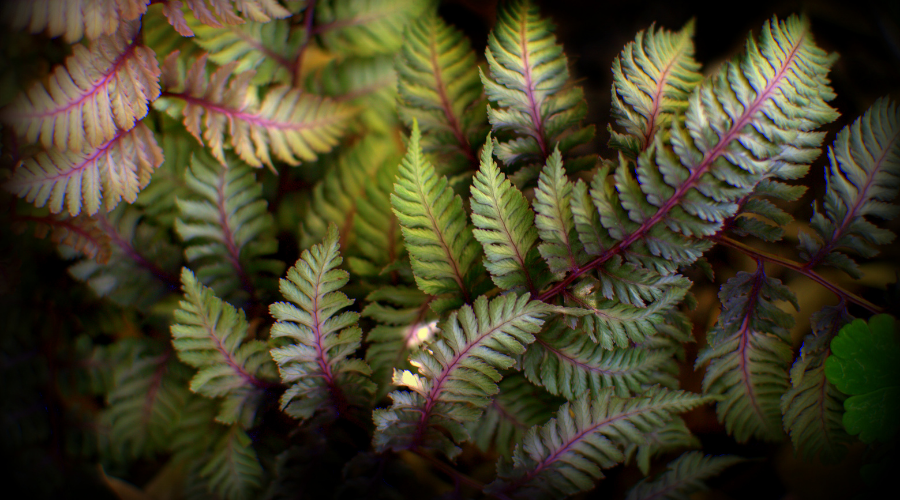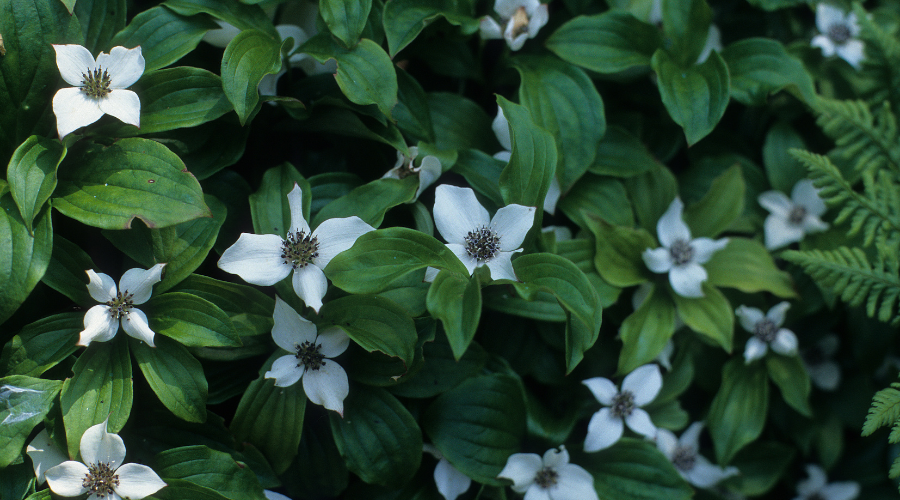Most plants need at least some sunlight to survive, but there are a few that prefer being in full shade. These plants have adapted to grow in low-light conditions and can be a great addition to any garden, especially those that don't get a lot of sun.
When most people think of plants that thrive in full shade, they tend to think of mosses and ferns. However, there are actually a wide variety of plants that can do well in shady areas. Explore some examples of shrubs, perennials, annuals, and ground covers that would grow beautifully in any yard.
SHRUBS
Hemlock Trees
Image credits: Craig Chanowski via Canva
Canadian or eastern hemlock trees are among the oldest and largest of all living things in North America. Some specimens are more than 500 years old and can reach a height of 60-100 feet (18-30 meters). These magnificent evergreens have a dense, pyramidal form with graceful, drooping branches. The dark green needles are soft to the touch and arranged in flat sprays. The cones are small, brown, and oval-shaped.
The wood of Canadian or eastern hemlock trees is light, strong, and durable. The bark is an important source of tannin, used in the tanning of leather. They grow best in cool, moist climates and can be found in a variety of habitats, including swampy areas, rocky slopes, and forest edges. These hardy trees are very tolerant of shade and can even flourish under heavy canopy cover.
Mountain Laurel
Image credit:Ray Hennessy via Unsplash
Mountain Laurel is a broadleaved evergreen shrub in the heather family that is native to the eastern United States. Most of the species’ range is in the Appalachian Mountains, with isolated populations in the Ozarks and the Cumberland Plateau. It occurs from southern Maine south to northern Georgia and west to Tennessee and Alabama.
The mountain laurel is an evergreen shrub growing to 7-15 feet (2-4.5 meters) tall and wide, with leathery, glossy leaves. The flowers are yellow-green, tinged with red, borne in clusters of 10-30 blooms from late May to early June. It matures from July to August, about six weeks after flowering.
This evergreen shrub grows best in humus-rich, acidic soils under partial shade. Too much direct sunlight may scorch the leaves, while too little light will result in leggy, open growth.
PERENNIALS
Dutchman's Breeches
Image credits: MarshaWassel via Canva
The Dutchman's breeches is a type of wildflower that gets its name from its resemblance to the traditional clothing worn by Dutchmen as this perennial has delicate white flowers that resemble a pair of pants hanging from a clothesline. This flower is native to North America and can be found in woods and fields. The Dutchman's breeches have white petals and blue flowers and grows to be about six inches tall. This flower is a member of the poppy family and blooms in the springtime.
The Dutchman's breeches is a plant that thrives in shady areas. This plant prefers moist soil and will go dormant in dry conditions. Although the sap is poisonous, it is not fatal; it can cause skin irritation.
Virginia Bluebells
Image credit:Gabe L via Unsplash
Virginia bluebells are a native wildflower that blooms in early to mid-spring. They have delicate, bell-shaped flowers that range in color from pale blue to purple. The leaves are broad, oval-shaped, and slightly toothed.
Virginia bluebells grow best in moist, rich soils in partial shade. It will tolerate full sun if the soil is kept moist. They spread rapidly by underground rhizomes and can form large colonies.
Virginia bluebells are relatively low maintenance once they are established. They do not need to be fertilized. Deadheading is not necessary but will prolong flowering. After the flowers fade, allow the plant to go to seed. The seed heads are attractive and attract birds. Virginia bluebells will go dormant in mid-summer and can be cut back at that time if desired. They will re-emerge in late summer or early fall.
ANNUALS
Tuberous Begonias
Image credits: zygotehasnobrain via Canva
Tuberous begonias are a type of flowering plant that is native to the Americas. They are part of the Begonia family, which contains over 1,600 different species. Tuberous begonias are known for their large, colorful flowers and their ability to thrive in shady areas.
Tuberous begonias are relatively easy to care for, but there are a few things to keep in mind in order to ensure that they thrive. They prefer moist, well-drained soil and need to be watered regularly (about once per week). They also benefit from being fertilized every couple of weeks during the growing season.
While they do best in shady areas, tuberous begonias can tolerate some sun if they are gradually introduced to it. If you live in an area with very hot summers, it is best to provide some protection from the afternoon sun to prevent the leaves from scorching.
With proper care, tuberous begonias will provide you with beautiful blooms all summer long. These plants make a great addition to any garden, and their colorful flowers are sure to brighten up any space.
GROUND COVERS
Japanese Painted Fern
Image credits: Nate Abbott via Canva
Japanese painted ferns are beautiful and unique plants that make a great addition to any home or garden. These ferns have distinctive black and white markings on their leaves and are easy to care for and thrive in moderate temperatures and humid conditions. These plants do best in partial shade and require moist, well-drained soil. Japanese painted ferns are relatively low-maintenance plants and make a great choice for those who are looking for an easy-to-care-for plant.
Bunchberry
Image credits: Michel VIARD via Canva
The Bunchberry plant is a low-growing, herbaceous perennial that is native to North America. It is a member of the rose family and typically grows in wooded areas or forest edges. The plant has small white flowers that form in clusters, resembling a bunch of berries. The fruit of the plant is edible but not very tasty.
The Bunchberry prefers to grow in shady areas but can also tolerate some sun. It prefers moist soils but can also survive in dry conditions. Once established, the Bunchberry is a low-maintenance plant. It is deer and rabbit resistant and does not require much fertilizer. The Bunchberry is a good choice for ground cover in shady areas of the garden.
In Summary
If you have a shady spot in your yard that you're not sure what to do with, consider planting some shade-loving plants. You may be surprised at how beautiful and vibrant they can make your space look.

